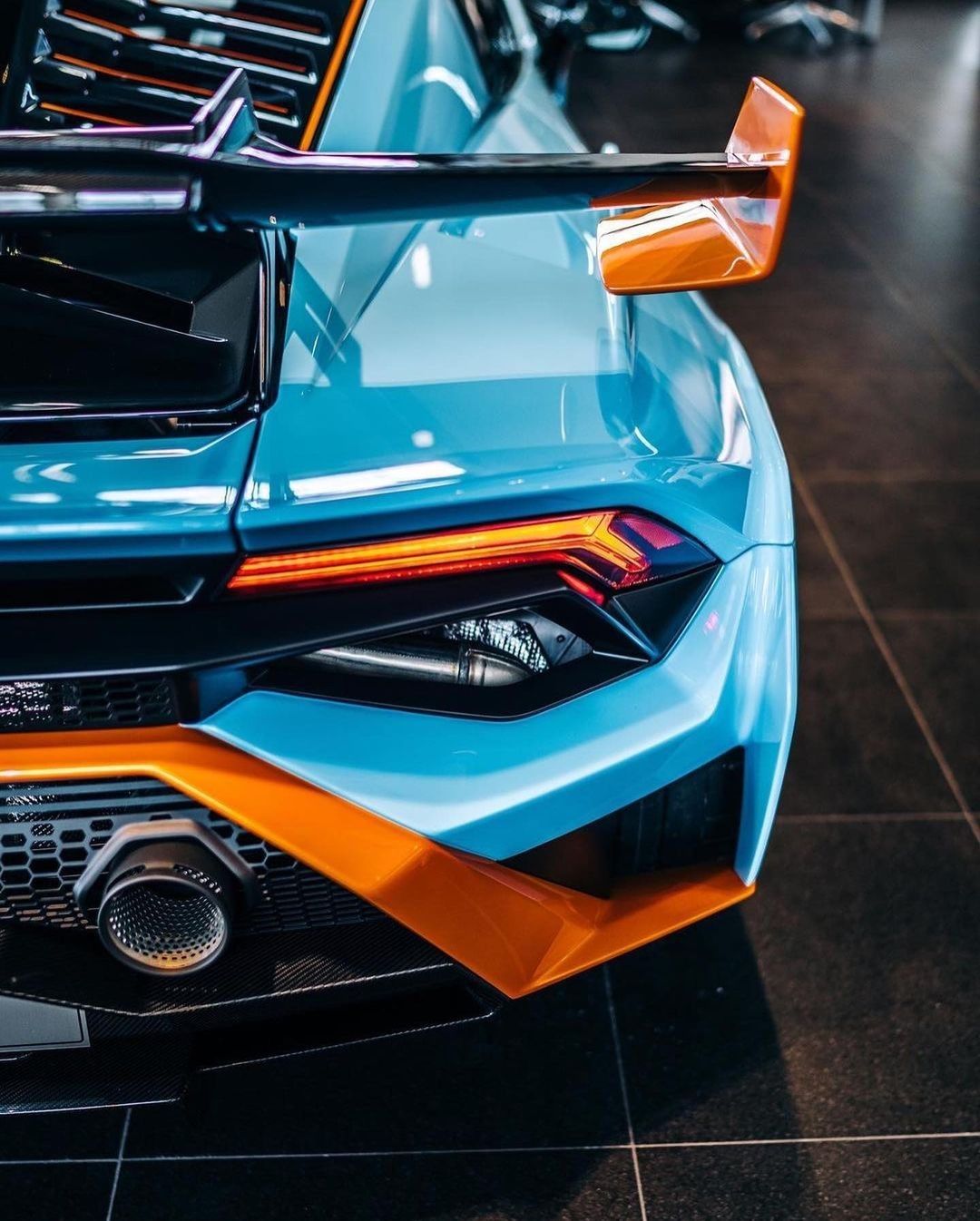Consider a 5.2-litre V10 rocket ship with 631bhp and F1-level downforce. Yes, the Lamborghini Huracán STO is exactly that.

A Lamborghini isn’t a car that hides its light under a bushel, but few things shout “Look at me!” like the new Huracán STO’s massive volume.
To some, Lamborghini will always be the most outré vehicle, caught in the tangle of disco king Giorgio Moroder’s moustache and Leo DiCaprio’s feckless idiot from The Wolf Of Wall Street. Wrong. These are now beautifully constructed and largely bulletproof supercars, capable of taking the driver to areas where few others can.
And Lamborghini’s competition heritage is reflected in the £268,000 STO. The company’s single-make Super Trofeo series debuted in 2009 and swiftly gained traction across three continents. Then things became even hotter. The company’s Squadra Corse GT3 cars won 30 titles, 85 race wins, and 243 podium finishes between 2016 and 2019. Lamborghini’s racing technology and techniques have now been translated to the new Huracán Evo STO, a track-oriented road car that is possibly the most extreme the firm has ever produced.

A lot of the STO narrative revolves around our old pal aerodynamics. If you compare its “pressure map” to that of its racing siblings, you’ll notice that the profiles are extremely similar. Take, for example, the new front splitter. The airflow in such location is neatly attached as it flows towards the intakes and deflectors on the front (and rear) underbody thanks to the curved radius in the middle part of its structure. Then there are the dual-purpose ducts on the front bonnet, which enhance the amount of downforce generated over the front axle while simultaneously increasing the flow of cooling air into the front radiator.
The front wheel arches have also been expanded for maximum visual effect, but the slats or louvres, more critically, reduce the high pressure and turbulent air that builds up in this area at high speeds. This not only improves the flow to the underbody but also increases downforce over the front axle. The louvres are formed and positioned differently at the front and rear, with the front one having a more slender curve to aid air flow and the rear one having a more pronounced angle to facilitate a better escape from the wheel arch and onwards beyond the body.

Check out that shark fin: it’s first emerged on Formula One vehicles a few years ago and is still used in world endurance racing in the LMP1 and 2 categories. It’s all about controlling the downforce produced during cornering. The fin builds pressure along its outside edge during the entry phase, which maximises inward forces towards the corner’s apex. This not only allows the STO to turn more quickly, but it also enhances its mid-corner stability. It aids in the prevention of “yaw,” which occurs when the car gets unstable and begins to oversteer, as well as improving the efficacy of the rear wing.
Carbon fibre is prevalent in the STO’s structure, but nowhere more so than on the car’s front part, nicknamed internally as the “cofango” (which combines the Italian words for “hood,” cofano, and “fender,” parafango). It’s a single piece built entirely of carbon fibre that takes influence from the Miura from the 1960s and the Sesto Elemento, a pure carbon-fibre concept car from the 2000s. The goal is to develop a car with virtually unfathomable grip, balance, and poise, especially on the world’s most difficult circuits’ quickest corners. This allows even non-professional drivers to experience the euphoric effects of downforce.
On a typical road, though, this is unlikely. Nothing focuses the mind like a Lamborghini, no matter how many fast, impractical cars you’ve driven. They’re far less difficult to drive than they formerly were, but they’re still not for the faint of heart. You sit low, with almost little visibility in the rearview mirror or over your shoulder — it’s all engine – and the stubby front end goes away quickly. The seat is hard to move about in. The engine start button is concealed beneath a little flap that resembles fighter jet iconography: press it, and the 5.2-liter V10 blasts into life. The power output is unchanged from previous Huracáns, which is a good thing because only a fool or the preternaturally insecure would consider it inadequate. However, the exhaust has been remapped, the throttle pedal has been made sharper and more sensitive, and the steering ratio has been made faster and more direct. This is likewise a non-hybridized, pure-combustion engine with no turbocharging. The combination of fuel and air produces amazingly explosive outcomes.
The STO is right in your face and entirely engaged on the work at hand, unlike previous Huracáns, which were criticised for being aloof. This thing is packed on a rocky rural road, but it’s not uncomfortable. There are three driving modes: STO for everyday use, Trofeo for maximal assault with optimal lateral and longitudinal grip, and Pioggia for maximum performance with substandard grip levels (in the wet, for example). The LDVI – Lamborghini’s Dynamic Vehicle Integration software – controls torque vectoring and rear-wheel steering like never before. As a result, you get one of those cars that hooks itself into the driver’s central nervous system, slicing into corners, cleaving to the apex, and exiting just as your hands and head expect. When the nose pushes wide, there’s no understeer, and it’ll only slide in the back if you disable traction control and go looking for those kinds of kicks. We think it’s best to enjoy this car on the track, but despite its intimidating exterior, it’s a nicely balanced automobile. Lamborghini, like the rest of the automotive industry, is now pursuing electrification. It’ll be fascinating to see how they respond to that challenge as a builder of ferociously charismatic cars.
But this is one heck of a send-off…
